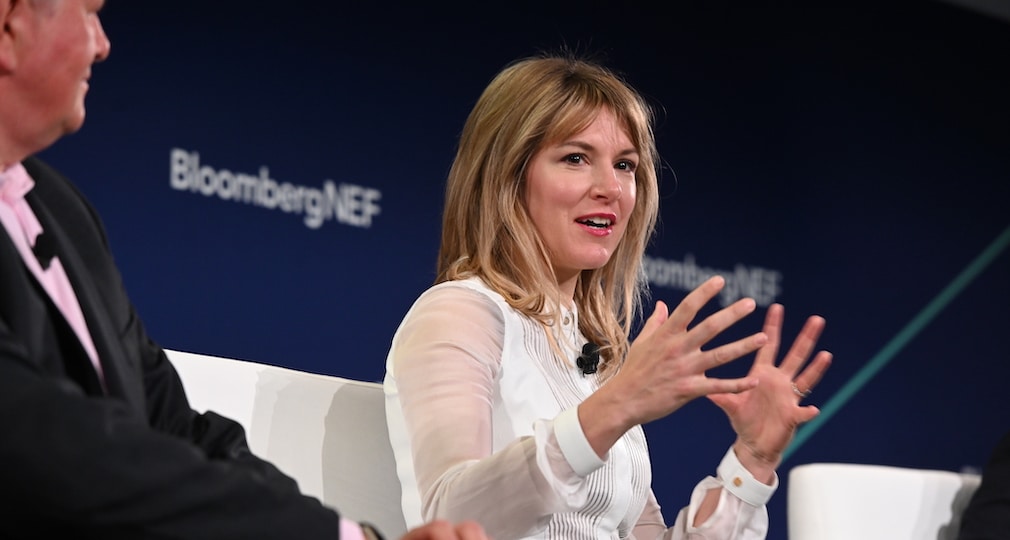A flurry of Q1 earnings calls in the last two weeks have found solar company CEOs generally unwilling to provide formal fiscal year 2020 guidance, due to the evolving impact of Covid-19 pandemic, but several noted that the pandemic might have a few positive long-term impacts on the residential solar industry.
Covid-19’s abrupt arrival put resiliency at the forefront of people’s minds and it has accelerated adoption of digital sales practices, they said.
“We’re seeing a lot of success in the conversion to digital sales… We’ve taken how the industry would have evolved – probably in two years – and we’ve done it in a month,” Lynn Jurich, co-founder and CEO of Sunrun said during the company’s first quarter earnings call. “I’m very encouraged by this transition and what it can mean for acquisition costs,” she added
During Q1 earnings calls last week, Vivint and Sunrun’s CEOs both said that April was a banner month in terms of digital leads. Enphase Energy also noted that it’s seeing an increase in digital leads and in traffic to its online store. On its earnings call, Enphase said that it is embarking on a multi-year plan that will involve developing a digital platform that can be used throughout an entire residential solar sales and customer service process.
According to Badri Kothandaraman, Enphase’s CEO, a powerful end-to-end digital platform could help Enphase sell more of its solar and storage products, while also supporting its customer base and its network of small and medium installers, which are under increased pressure to digitize.
Customer acquisition costs
Lowering customer acquisition costs is a key challenge facing the residential solar industry, especially now because residential customer acquisition costs have been increasing over the last few years. For the residential solar industry, this is a particularly vexing trend because the solar investment tax credit stepdown process is in motion; the U.S. residential solar sector relies on the ITC when it sells solar systems to homeowners.
“Early indications are that even if the country enters a prolonged economic downturn with poor consumer confidence, people will still want solar,” Jurich said during Sunrun’s earnings call.
The resiliency message
With many people relying on more daytime energy because they are staying and/or working at home during the Covid-19 pandemic, the resiliency message around solar and batteries is resonating more acutely, Jurich said. Households in California, for example, are using as much as 20% more electricity, she noted.
In light of last year’s wildfires and public safety power shutoffs, the idea that California’s shelter-in-place order might have delayed utilities’ preventative maintenance work is also worrying.
“Powerwall, Powerpack, Megapack. We are seeing tremendous demand for stationary storage, more than we can supply, at least for 2020,” Tesla’s co-founder and CEO Elon Musk said on Telsa’s Q1 earnings call on April 29th. During that call, Musk also said that Tesla’s “Battery Investor Day” would probably take place during the third week of May.
On the April 29th call, after saying that Tesla would announce the next Gigafactory possibly within the month, Musk hinted that Tesla’s Gigafactories “could arguably” start being called “Tera”.
Both Musk and Tesla’s CFO Zachary Kirkhorn were tightlipped about what Tesla’s “Battery Investor Day” would entail. However, on May 7th Tesla published a new battery storage patent for EVs.
This content is protected by copyright and may not be reused. If you want to cooperate with us and would like to reuse some of our content, please contact: editors@pv-magazine.com.








By submitting this form you agree to pv magazine using your data for the purposes of publishing your comment.
Your personal data will only be disclosed or otherwise transmitted to third parties for the purposes of spam filtering or if this is necessary for technical maintenance of the website. Any other transfer to third parties will not take place unless this is justified on the basis of applicable data protection regulations or if pv magazine is legally obliged to do so.
You may revoke this consent at any time with effect for the future, in which case your personal data will be deleted immediately. Otherwise, your data will be deleted if pv magazine has processed your request or the purpose of data storage is fulfilled.
Further information on data privacy can be found in our Data Protection Policy.